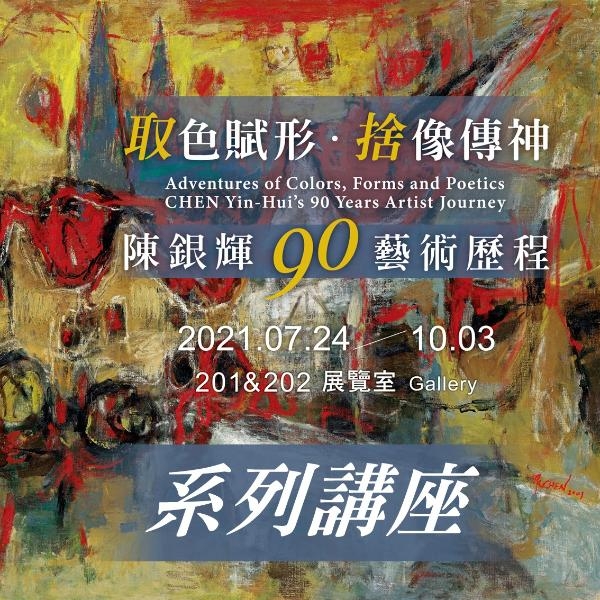| Number of Sessions | Venue |
|---|---|
|
Adventures of Colors, Forms and Poetics: CHEN Yin-Hui’s 90 Years Artist Journey
|
|
-
 Organizer
:
National Taiwan Museum of Fine Arts
Organizer
:
National Taiwan Museum of Fine Arts
-
 Opening Times
:
2021/7/24-10/3
Opening Times
:
2021/7/24-10/3
Adventures of Colors, Forms and Poetics: CHEN Yin-Hui’s 90 Years Artist Journey
Curators: LIAO Jen-I, LIU Pi-Hsu
Date: 2021/7/24-10/3
Venue: Gallery 201 & 202, National Taiwan Museum of Fine Arts
==================================================================================
Among the first generation of lyrical abstract painters in post-war Taiwan, CHEN Yin-Hui was born in the Lucao Township of Chiayi County in 1931. He graduated from the Provincial Chiayi Senior High School in 1950, then graduated from the Taiwan Provincial Normal College School of Art (now the NTNU Department of Fine Arts) in 1954. CHEN returned to teach at his alma mater in 1957, and upon his retirement in 1955, he relocated to Taichung. He was a student of WU Hsueh-Jang, LIAO Chi-Chun, MA Pai-Sui, and CHEN Hui-Kun. Amalgamating the old to forge the new, he was like an ocean that encompassed a hundred rivers -- his lyrical abstractionism stood uniquely apart, and has been hailed as “the CHEN Yin-Hui style.” CHEN began in Impressionism, then traversed through Post-impressionism to arrive at modernist abstract painting. He extracts and relinquishes at will to create an artistic conception that is firmly grounded in the figurative, that flows through the abstract, and ambles among forms, colors, and poetics.
Subtheme 1: Affectionate Colors
With the sensibilities of a poet and the rationality of a scientist, CHEN used color as a foundational element as he combined emotions plumbed from the far-reaches of his soul and of landscapes, then transformed them into vistas in his paintings.
Subtheme 2: Abstract Point of View
CHEN shifted from a fixed perspective to an impermanent perspective that allowed colors the autonomy to develop action and space, creating form through the freedom of movement. Hence, his abstract paintings were full of expression, and surpassed the mere representations of scenes or objects.
Subtheme 3: Flowing Lines
The lines in CHEN’s paintings did not reproduce scenes or objects, but traced a flow of emotions. Melodic and rhythmic, CHEN’s lines transformed the painted canvas into symphonic movements that guided the visual senses toward the soul.
Subtheme 4: Overlapping Perspectives
CHEN’s paintings combined the visual sense with memory and imagination to form overlapping panoramas with layers of mutually complementary texts. These added a rich temporal-spatial context and cultural element to his work.
Subtheme 5: Light and Shadow of Time
Light and Shadow of Time: The light and shadow in CHEN’s work were not the result of natural light projected onto the surfaces of objects. They were not physical lights and shadows, but those of the soul. They represented the artist’s encounters and farewells on richly-layered temporal trajectories.
Subtheme 6: Poetic Narrative
CHEN created rich poetic narratives with his colors and lines. He preserved in painting the splendor of that which moved him; and arranged the rhythms and melodies of narrative through his stylized poetry.
Subtheme 7: Spirit of Life
CHEN embraced everything of the world. He was indifferent to material objects, but conveyed sentiment through elements in nature and landscapes. He would pick up his paintbrush to praise even the forgotten corners, imparting a profound artistic conception with the simplest of brushstrokes.
The exhibition information may change due to the COVID-19 epidemic, please follow the latest announcement on the official website of the National Taiwan Museum of Fine Arts.

